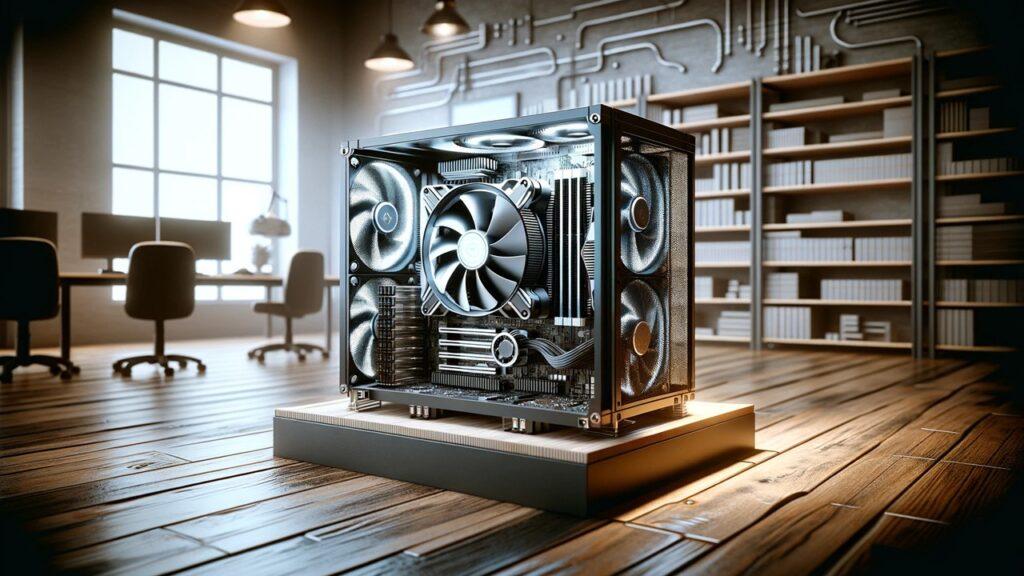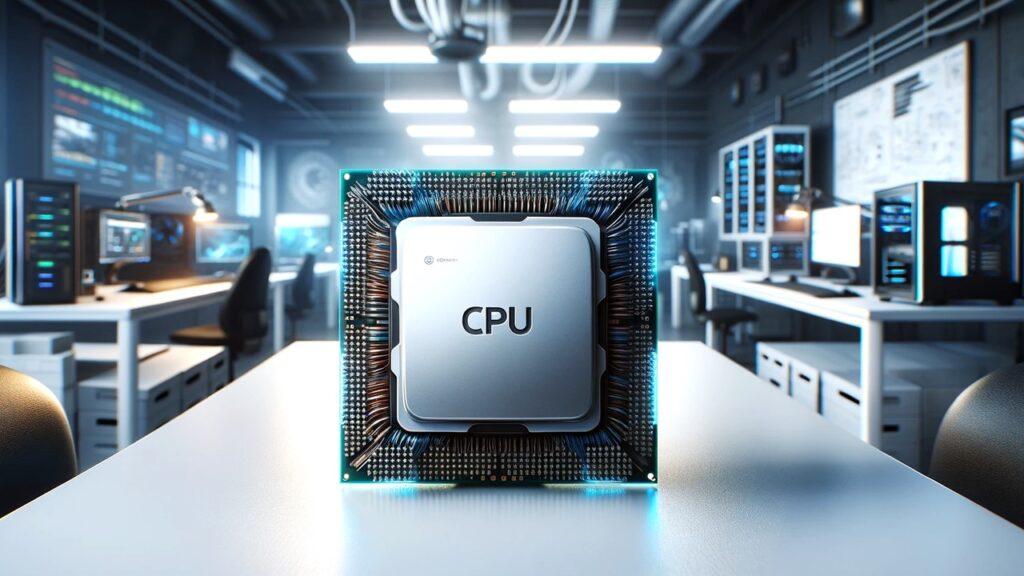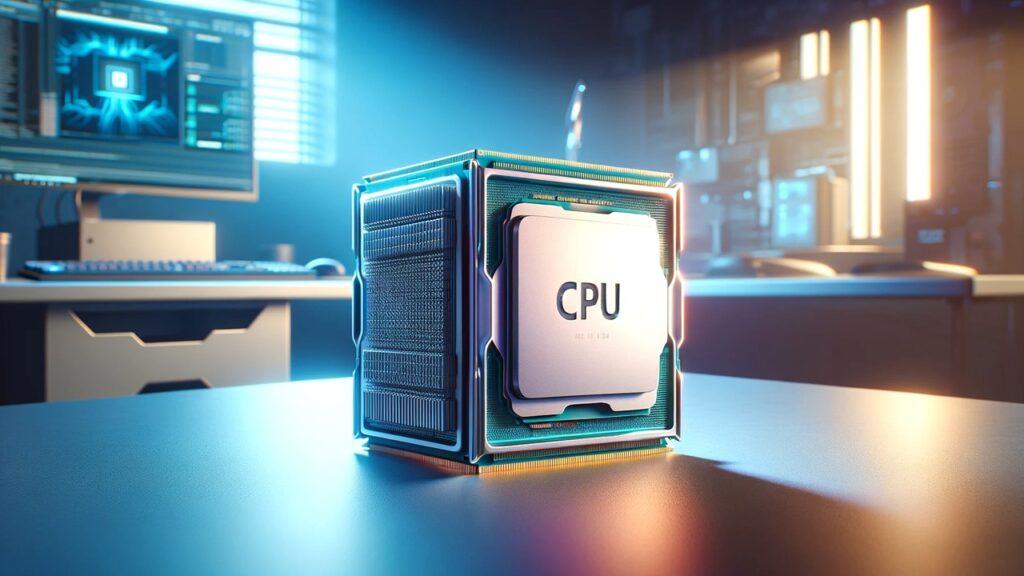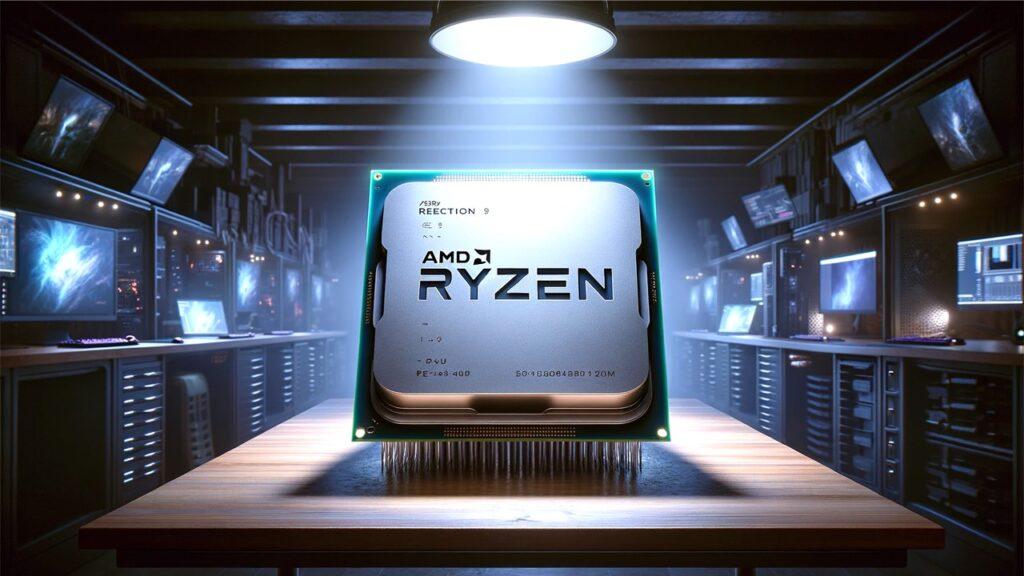Welcome to the cutting edge of computing performance! If you’re aiming to enhance your PC build with blazing fast boot times, then understanding the critical role of NVMe SSDs is essential. These devices, leveraging PCIe and M.2 technologies, are the backbone of top-tier PC Builds today. They push the boundaries of speed, leaving traditional SATA SSDs in the dust. This makes selecting the right NVMe SSD pivotal for anyone looking to optimize their system’s startup speed and overall efficiency. In this guide, we have extensively researched, reviewed, and ranked the 5 best NVMe SSDs for fastest boot times In 2025. This ensures you can choose the right NVMe SSDs for PC’s fastest boot times from the many choices.
We’re reader-supported. When you buy through links on our site, we may earn an affiliate commission. As an Amazon Associate, we earn from qualifying purchases.
Our Top Picks Of The Best NVMe SSDs for Fastest Boot Times In 2025
1. Best Overall: SAMSUNG 980 PRO
2. Best Performance: Crucial T705
3. Best PCI Express 4.0 M.2: WD_BLACK SN850X
4. Best Value: Crucial T500
5. Best Versatile Option: SAMSUNG 990 Pro
What Is The Best NVMe SSD for Fastest Boot Times In 2025?
When it comes to supercharging your PC build, selecting the right NVMe SSD can be a game-changer. These blazing fast storage options utilize PCIe interfaces and M.2 form factors to deliver lightning fast speeds that far surpass older SATA drives. Moreover, the quest for the quickest boot times hinges on these advanced technologies, making NVMe SSDs essential for any high-performance setup. If you’re looking to trim seconds off your startup, the right NVMe SSD is your go-to choice.
1. Best Overall: SAMSUNG 980 PRO

Quick Specifications
- Storage Capacity: 2 TB
- Interface: PCIe NVMe Gen 4
- Form Factor: M.2 2280
- Read Speed: Up to 7,000 MB/s
- Special Features: Thermal control, backward compatible
From our standpoint, the SAMSUNG 980 PRO redefines what we expect from NVMe SSDs, especially when it comes to enhancing boot times and system efficiency. Equipped with the cutting-edge PCIe Gen 4 technology, this SSD not only speeds up system starts but reshapes overall computing experiences.
Moreover, in our view, the 980 PRO excels across diverse applications, from gaming to intensive data processing, and is exceptionally power efficient due to its sleek M.2 design.
Pros
- Blazing read speeds up to 7,000 MB/s accelerate system performance dramatically.
- High-end thermal management features ensure the drive operates coolly under load.
- The small form factor is ideal for both desktop and portable computing setups.
- The ability to work with older PCIe 3.0 systems makes it versatile for upgrades.
Cons
- Heatsink option required for heavy usage.
- Optimal performance requires a system with PCIe 4.0 support, which not all users have.
In our opinion, the SAMSUNG 980 PRO distinguishes itself on our list for its speed and dependable performance. It stands as an excellent choice for users seeking to elevate their desktop or laptop’s capabilities, ensuring a future-proof and robust configuration. For those embarking on a Desktop PC Build aimed at top-tier performance, the 980 PRO represents a fitting selection from our perspective.
2. Best Performance: Crucial T705

Quick Specifications
- Storage Capacity: 2 TB
- Interface: PCIe Gen5 NVMe
- Form Factor: M.2
- Read/Write Speeds: Up to 14,500/12,700 MB/s
- Compatibility: Gaming Console, Desktop, Workstation
In our view, the Crucial T705 sets a new benchmark in the realm of NVMe SSDs with its advanced PCIe Gen5 technology. This drive not only doubles the speeds of its predecessors but also offers the robustness needed for high-end gaming and professional tasks.
Moreover, the T705’s ability to leverage Microsoft DirectStorage accelerates game load times significantly, making it an ideal choice for gamers and creative professionals alike. Its large capacity and high-speed capabilities are tailored to meet the demands of modern applications.
Pros
- Unprecedented speeds significantly reduce load times and enhance data transfer rates.
- DirectStorage support optimizes gaming experiences by speeding up game loading.
- The inclusion of hardware encryption provides an additional layer of data security.
- A complimentary one-month subscription to Adobe Creative Cloud adds substantial value.
Cons
- Full utilization of its capabilities requires systems with PCIe Gen5 support.
- Its high-performance features may exceed the needs of casual users.
In our opinion, the Crucial T705 shines brightly on our list as a top performer. With its great speeds and comprehensive feature set, it stands as an excellent choice for those looking to upgrade their systems for peak performance, especially in gaming and high-demand applications.
3. Best PCI Express 4.0 M.2: WD_BLACK SN850X

Quick Specifications
- Storage Capacity: 4TB
- Interface: Gen4 PCIe NVMe
- Form Factor: M.2 2280
- Read Speed: Up to 7,300 MB/s
- Compatibility: Laptop, Desktop
In our view, the WD_BLACK SN850X NVMe SSD represents a pinnacle in performance-oriented storage solutions for gamers and professional users alike. Boasting blistering speeds and a robust feature set, this SSD drastically reduces load times, allowing you to dive into action quicker than ever before.
Furthermore, this drive’s expanded capacity options and enhanced thermal management techniques ensure that you receive not only fast but also stable performance across various applications. Whether you’re battling in an intense gaming session or managing heavy data tasks, the SN850X stands ready to deliver without compromise.
Pros
- Insane read speeds significantly reduce game load times and system boot up.
- Capacities up to 4TB allow ample storage for modern, space-heavy applications and games.
- Features like Game Mode 2.0 enhance the gaming experience on Windows platforms.
- Advanced thermal management maintains performance consistency even under stress.
Cons
- Maximum performance is contingent on having a system with PCIe 4.0 support.
- Heavier power consumption might not suit all setups, particularly in compact builds.
In our opinion, the WD_BLACK SN850X stands as an outstanding selection on our list. Its remarkable speed and robust build make it an excellent choice for upgrading your PC Setup. Offering reliable and swift performance, it certainly stands out as a crucial component in any high-performance system configuration from our perspective.
4. Best Value: Crucial T500

Quick Specifications
- Storage Capacity: 1 TB
- Interface: PCIe NVMe Gen 4
- Form Factor: M.2
- Read/Write Speed: Up to 7,300/6,800MB/s
- Compatibility: Laptop, Gaming Console, Desktop
From our perspective, the Crucial T500 stands out as a formidable player in the NVMe SSD market, particularly for those who balance cost and performance. With impressive speeds and a straightforward installation process, it’s a solid contender for both gamers and professional creators alike.
Moreover, in our experience, the T500 enhances gaming experiences significantly, offering faster game loads and improved texture rendering thanks to Microsoft DirectStorage support. This drive isn’t just for gaming; it excels in content creation, offering noticeable improvements in application performance and rendering times.
Pros
- Exceptional sequential read/write speeds streamline boot times and data access.
- Enhanced gaming performance with faster load times and improved graphics handling.
- Versatile compatibility ensures it fits a wide range of devices and systems.
- Offers a significant upgrade over Gen3 SSDs with double the performance potential.
Cons
- Full performance potential can only be unleashed with devices that support PCIe Gen 4.
- May require additional cooling solutions in tightly packed systems to maintain peak performance.
In our opinion, the Crucial T500 places it as a value option on our list for those seeking a balance between affordability and performance in their next PC build. It’s an excellent choice for upgrading your system, providing a robust performance boost that supports both gaming and professional applications without breaking the wallet.
5. Best Versatile Option: SAMSUNG 990 Pro

Quick Specifications
- Storage Capacity: 2 TB
- Interface: PCIe NVMe Gen 4
- Form Factor: M.2
- Special Features: Portable
- Compatibility: Desktop
From our perspective, the SAMSUNG 990 Pro is a standout choice for those who prioritize sleek design without compromising on speed. This drive combines cutting-edge technology with user-friendly features, making it a top contender in the NVMe SSD market.
Moreover, the 990 Pro’s integration with Samsung’s custom software enhances its appeal, providing users with easy performance optimization and maintenance. This SSD not only boosts your system’s performance but also ensures it remains at peak efficiency over time.
Pros
- Impressive speeds and high capacity meet the demands of advanced applications and gaming.
- Samsung custom software facilitates easy management and optimization.
- The portable form factor makes it versatile for various installation needs.
- Exceptional compatibility with desktop environments enhances user experience.
Cons
- Performance may vary with different system configurations.
- Some users might prefer larger capacities for extensive media libraries or applications.
In our opinion, the SAMSUNG 990 Pro is a superb versatile selection on our list for its blend of performance and practicality. Its efficient management tools and reliable performance make it an excellent choice for upgrading your PC build. This SSD ensures you enjoy faster boot times and responsive applications, making it an ideal upgrade for any high-performance setup from our standpoint.
Understanding NVMe SSD Technology
In today’s fast-paced digital world, NVMe SSD technology is reshaping the way we think about data storage in PC builds. It’s not just about speed; it’s about transforming how quickly a system can react, from booting up to loading the most demanding applications. As we dive into what makes NVMe SSDs so revolutionary, you’ll see why they’re becoming the heart of cutting-edge desktop setups.
What is NVMe Technology?
Imagine a superhighway where data travels without any roadblocks at lightning speed—that’s what NVMe technology is to a computer. Standing for Non-Volatile Memory Express, NVMe cuts through traditional data transfer limitations by connecting directly to the system’s main processor through high-speed PCIe slots. This means data isn’t just moving faster; it’s flowing smarter, straight to the brain of your computer, which drastically reduces wait times and increases efficiency.
Benefits of NVMe SSDs in PC Builds
Switching to an NVMe SSD is like swapping out a slow-moving sedan for a sports car. Suddenly, everything speeds up. Boot times? Snappier than ever. Application launches? As quick as a blink. This isn’t just about raw speed, though; it’s about smoother multitasking and handling data-heavy tasks with ease. Reduced latency and higher IOPS mean that your system doesn’t just work faster, it works better, tackling complex operations with finesse.
NVMe SSD Components and Functionality
Diving deeper, the main work of NVMe SSDs lies in their architecture. They are built around advanced NAND technology controlled by sophisticated controllers and supplemented by DRAM cache to buffer data requests. What truly sets NVMe apart are the PCIe lanes, which are like express lanes that bypass traffic, ensuring data reaches its destination in the quickest time possible. This is the kind of tech that makes modern high-performance PCs possible.
Embracing NVMe SSD technology in your PC build isn’t just a step forward; it’s a leap towards future-proofing your system’s performance. With their remarkable speed and efficiency, NVMe SSDs are undoubtedly a cornerstone of any high-performance setup, empowering your machine to operate at the pinnacle of its potential. For anyone passionate about getting the most out of their computer, integrating NVMe SSDs is an intelligent choice that pays dividends in speed, reliability, and efficiency.
Do You Need NVMe SSDs for Fastest Boot Times?
In today’s technological era, where speed often equates to productivity, choosing the right SSD for your PC build is more crucial than ever. This prompts an important consideration: Is an NVMe SSD essential for achieving the fastest boot times in your Desktop PC Build?
NVMe SSDs are mainly used for their use of PCIe lanes. This allows for faster data transfer rates compared to traditional SATA SSDs. This advantage makes them the preferred choice for users looking for speed and efficiency. With NVMe SSDs, not only do boot times shrink, but the overall responsiveness of the system improves, enhancing everything from multitasking to heavy-duty computing tasks.
Furthermore, for professionals and enthusiasts who engage in intensive applications such as 3D rendering or large-scale data processing, the quick read/write capabilities and minimal latency of NVMe SSDs can significantly streamline their workflows. This isn’t merely about quick start-ups; it’s about maintaining a swift pace during high-demand operations.
NVMe SSDs tend to be more expensive than their SATA alternatives. If your computing demands are more modest—like basic web browsing or light media creation—a more cost-effective SSD may suffice.
If your aim is to construct a top-tier gaming rig or a powerhouse for professional software, investing in an NVMe SSD is undoubtedly a smart move. The leap in boot time and application performance is considerable, justifying the higher price for power users. For those with simpler needs, a balance must be found between cost and functionality. Yet, for anyone aiming to maximize their PC’s performance, the NVMe SSDs are indispensable for achieving the quickest and most efficient user experience.
Choosing the Right NVMe SSD
Selecting the perfect NVMe SSD for your PC can dramatically enhance your experience, speeding up everything from system boot times to application response. Let’s explore how to pinpoint the best NVMe SSD that suits both your performance needs and budget constraints.
How To Choose The Right NVMe SSD for Fastest Boot Time
The key to selecting an NVMe SSD is focusing on sequential read and write speeds. Look for drives boasting impressive IOPS figures to ensure swift operations. Durability is also crucial—pay attention to the Total Bytes Written (TBW) rating, which indicates how much data the SSD can handle over its lifespan. Opt for a capacity that aligns with your usage to avoid overspending for unnecessary storage.
Compatibility Checks for NVMe SSDs in PC Builds
Ensure the NVMe SSD you choose fits physically and technically with your motherboard. Check if your motherboard’s M.2 slot matches the SSD’s form factor and supports the same PCIe generation as your SSD to utilize its full speed potential. Up-to-date hardware is essential to maximize the performance of state-of-the-art SSDs.
Budget Considerations When Purchasing NVMe SSDs
Budget often dictates your SSD choice. Even entry-level NVMe SSDs offer significant improvements over traditional HDDs or SATA SSDs, making them a worthwhile upgrade without breaking the bank. Stay alert for sales and promotional discounts, which can make higher-end SSDs more accessible.
Selecting an NVMe SSD involves balancing speed, compatibility, and cost. By carefully considering each factor, you can enhance your PC’s performance effectively and economically. Remember, the right SSD will not only quicken your system’s boot time but also transform your overall computing experience, making it smoother and more responsive.
Installing and Configuring Your NVMe SSD
Enhancing your desktop PC build with an NVMe SSD not only boosts your system’s efficiency but also elevates the entire computing experience. Acquiring a high-speed NVMe SSD marks just the beginning; its proper installation and optimization are crucial to harness the full power of your investment. This segment aims to demystify the installation process and guide you through fine-tuning your SSD’s performance, ensuring your system operates at its peak capacity.
Step-by-Step Installation Guide
The journey to upgrading your desktop PC with a new NVMe SSD is straightforward, provided you approach it methodically. Begin by ensuring your PC is powered off and unplugged. Open the case to reveal the motherboard’s M.2 slot, typically located near the CPU or PCIe slots. If you’re replacing an old SSD, gently release it by removing the securing screw. To install your new NVMe SSD, align the module’s notch with the slot’s key, and firmly press down until the clips automatically lock into place. A correct installation is confirmed by a distinct click, signifying the SSD is securely seated. It’s crucial to apply even pressure and ensure proper alignment to avoid damaging the delicate connectors.
Software Setup for Maximum Performance
With your NVMe SSD securely installed, the next step involves setting up the software to extract maximum performance. Upon restarting your PC, enter the BIOS setup by pressing the designated key (often Delete or F2). Verify that the SSD is recognized and configure it as the primary boot device to improve startup speed. After exiting BIOS, proceed to install the operating system onto your SSD, if necessary, and update the SSD’s firmware from the manufacturer’s website to ensure optimal performance and compatibility.
Optimizing OS Settings for NVMe SSDs
To maximize the performance of your NVMe SSD, certain adjustments in the operating system settings are beneficial. For Windows users, ensure that the TRIM command is enabled to optimize the processing of write commands, which helps maintain the speed and longevity of your SSD. Additionally, adjust your power settings to prevent the SSD from entering a low power state, which can throttle its performance. These settings help maintain the SSD’s high performance and reliability over time.
Proper installation and subsequent optimization of your NVMe SSD are indispensable steps toward achieving a top-performing setup. By carefully following the detailed installation guide and delving into both BIOS and OS settings to fine-tune performance, your system is prepared to meet and exceed the demands of high-speed computing. With these enhancements, your PC build is fully equipped to handle intensive applications and large workloads efficiently, providing a seamless and productive user experience.
Maintaining Your NVMe SSD
Upgrading to an NVMe SSD in your PC build is a game-changer for enhancing system performance, especially for achieving rapid boot times. But like any high-performance component, it requires proper care to keep it running smoothly over the long term. Here, we’ll dive into essential maintenance tips and monitoring strategies to ensure your NVMe SSD stays in pristine condition.
Monitoring SSD Health and Performance
To safeguard the longevity and efficiency of your NVMe SSD, it’s crucial to monitor its health and performance regularly. Utilize the specialized software that often comes with your SSD; these applications can provide comprehensive insights into your drive’s condition, including wear levels, storage capacity, and potential errors. By keeping a close eye on these metrics, you can preemptively address issues before they escalate, thereby preserving your SSD’s optimal functionality.
Furthermore, it’s wise to perform periodic health checks using these tools to track the SSD’s endurance and remaining life expectancy. Staying informed about these aspects helps in planning for upgrades or replacements without unexpected downtimes.
Right Practices for SSD Longevity
Maintaining an NVMe SSD isn’t just about monitoring—it’s also about employing best practices to extend its life. One crucial step is to regularly update the SSD’s firmware. These updates can fix bugs, improve performance, and enhance compatibility with newer hardware and software.
Keeping your SSD from getting too full is another key practice; aim to use no more than 70-80% of its capacity to avoid overstressing the drive. Additionally, enabling features like TRIM can help manage the way data is deleted, which optimizes the SSD’s ability to write new data and prolongs its useful life.
Proper maintenance of your NVMe SSD is essential for keeping your PC at peak performance and ensuring those quick boot times last for the life of the system. By monitoring its health, updating firmware regularly, and managing its storage capacity wisely, you can enjoy the full benefits of your investment in cutting-edge SSD technology. Regular attention and care will keep your SSD—and by extension, your PC—running efficiently.
Wrapping It Up!
The journey through understanding and harnessing the potential of NVMe SSDs underscores their pivotal role in modern PC builds. From dramatically accelerating boot times to enhancing overall system performance, NVMe SSDs stand out as quintessential upgrades for anyone seeking efficiency and speed in their computing tasks.
The installation and configuration of an NVMe SSD, while technical, is a gateway to unlocking true system potential. Properly embedding this powerful storage solution into your PC not only ensures quicker start-ups but also a smoother, more responsive computing experience across all applications. The meticulous process of choosing the right NVMe SSD—considering factors like speed, compatibility, and budget—highlights the importance of matching this advanced technology with your specific needs and system specifications.
Moreover, the optimization of both hardware settings via BIOS and software configurations within the operating system further refines and unleashes the capabilities of NVMe SSDs. These steps are crucial for anyone looking to not just keep pace with but exceed the demands of modern digital workflows and intensive computing environments.
In conclusion, integrating a high-performance NVMe SSD into your PC is not just about achieving faster boot times—it’s about transforming your entire computing experience. By investing in the right NVMe SSD and taking the necessary steps to properly install and optimize it, you equip your PC to meet the challenges of advanced applications and heavy workloads with unmatched efficiency and speed. This upgrade, therefore, is not merely a component change but a significant leap towards future-proofing your digital capabilities.
Related FAQs
What is NVMe SSD?
NVMe SSD stands for Non-Volatile Memory Express Solid State Drive. It’s a storage device that utilizes the NVMe protocol to access data, providing faster speeds compared to traditional SATA SSDs.
How do NVMe SSDs improve boot times?
NVMe SSDs offer significantly faster read and write speeds than traditional hard drives or even SATA SSDs, resulting in quicker boot times for your operating system and applications.
Are NVMe SSDs compatible with all motherboards?
NVMe SSD compatibility depends on your motherboard’s M.2 slot support. Most modern motherboards support NVMe SSDs, but it’s essential to check compatibility before purchasing.
Can NVMe SSDs be used as boot drives in any operating system?
Yes, NVMe SSDs can be used as boot drives in most operating systems, including Windows, macOS, and various Linux distributions. However, make sure your motherboard and operating system support NVMe booting.
What factors besides NVMe SSD affect boot times?
While NVMe SSDs significantly improve boot times, other factors like the CPU, RAM speed, and BIOS settings also play a role. Ensuring a balanced system with adequate resources can further enhance boot performance.

At our core, we’re a group of passionate tech lovers, just like you. We dive deep into the world of tech, especially when it’s about building PCs that perform. We try to provide as much value to the readers with our information and how to blog articles as possible. For affiliate articles our honest and transparent reviews of essential tech products are rooted in real-world experience. We take great satisfaction in offering unbiased evaluations, ensuring that you can make informed decisions when investing in your desired techs. As an affiliate website, we may earn a small commission from some of the products we feature. However, rest assured that our opinions are not influenced by this, and your trust is always our main priority.




